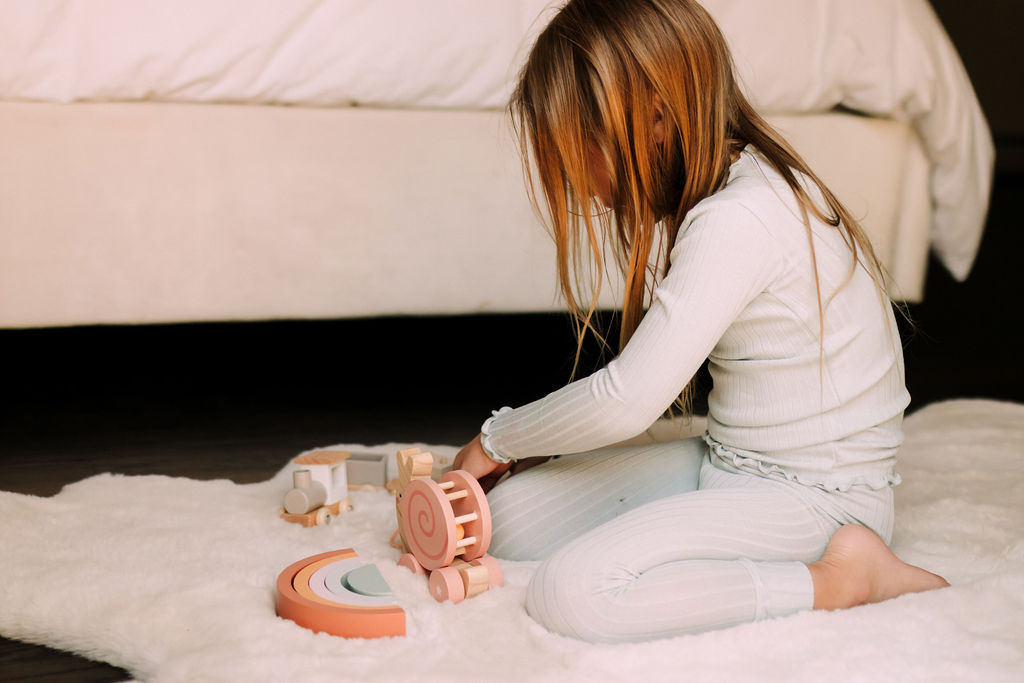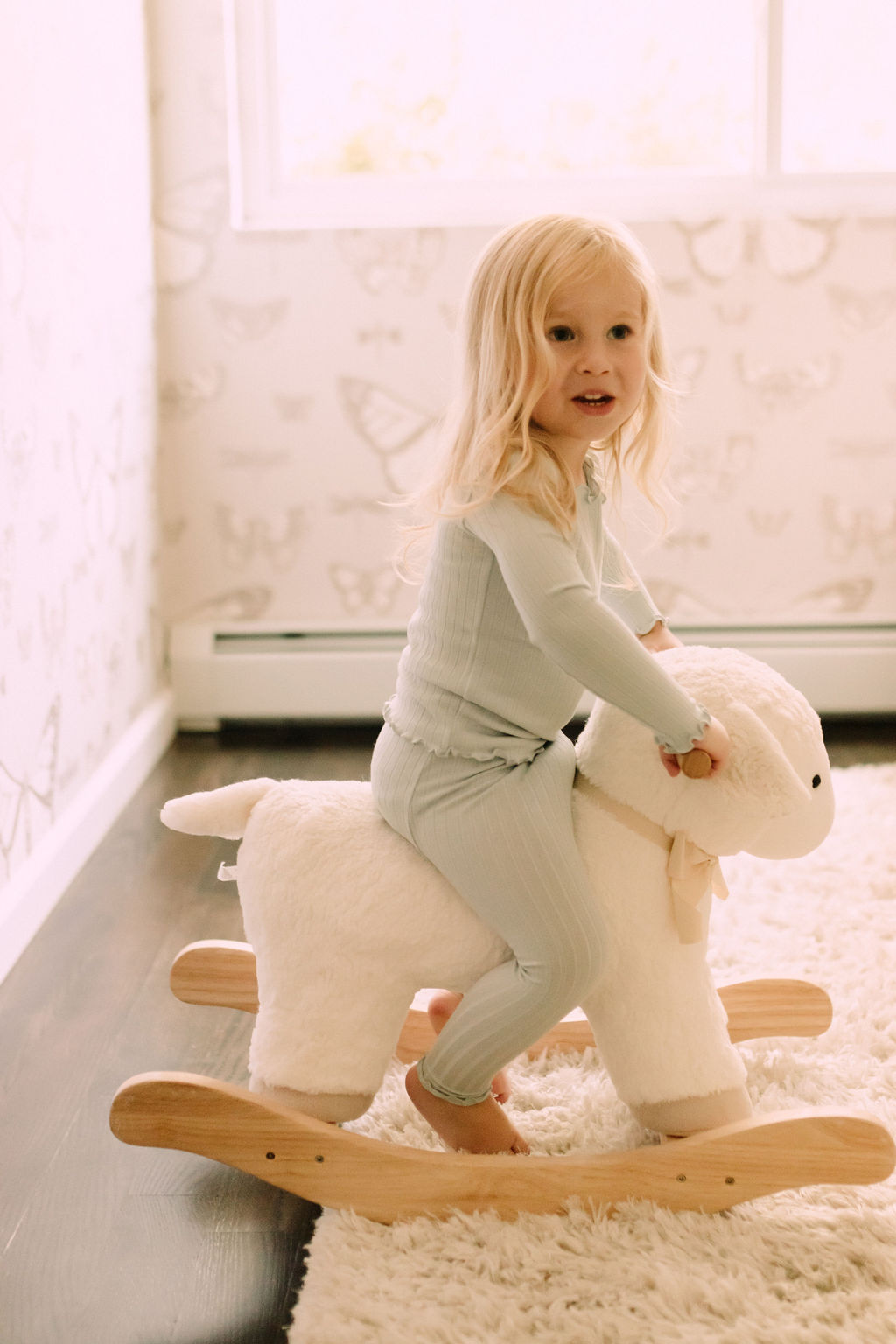For the past ten years, swaddling was considered the gold standard for baby sleep. It helped babies sleep for longer stretches, helped calm them, and was thought to reduce the risk of SIDS.
The Swaddle Shift
Nowadays, more and more moms are moving away from swaddling their newborns. Why are they doing this?
- Research previously indicated that swaddling reduced the risk of SIDS. In 2022, that changed. New research indicated that swaddling is no longer correlated with a reduction in SIDS risk.
- Swaddling helps inhibit the Moro Reflex, commonly known as the startle reflex. When it comes to getting more sleep, this is generally seen as a positive. However, it’s becoming more widely understood that this may (may) delay the Moro Reflex from integrating in a timely manner (3-6 months) which could lead to developmental concerns. Please know that at this point, we don’t yet have evidence to support this claim.
Pros of Swaddling
- Swaddling promotes longer stretches of deeper sleep by reducing brainstem arousals (a pro for more sleep or a con if we assume that frequent wakings protect a baby from SIDS).
- Swaddling promotes more restful sleep when babies are on their backs, giving parents less temptation to put baby to sleep on their stomach, which is a SIDS risk factor.
- Swaddling is associated with a significant reduction in maternal anxiety and increase in parental satisfaction. This is not a small thing: maternal well being has a direct impact on baby’s overall care and brain development, not to mention minimizing risk of postpartum depression, marital discord and unsafe sleep practices done out of desperation.
- Swaddling reduces scratching of a baby’s face in the early days (mittens are not considered safe for sleep)
- Swaddling reduces the risk of baby rolling over onto their stomach during sleep.
Cons of Swaddling
- Swaddling doesn’t give babies a chance to startle during sleep, only allowing time for the Moro Reflex to integrate during awake times. There is a concern that if the Moro Reflex doesn’t integrate properly, it may lead to developmental concerns later on. This concern is not evidence-based at this time.
- Critics of swaddling argue that extending sleep and minimizing arousals is detrimental to babies, and that frequent wakings are a protective mechanism to reduce SIDS risk.
- Swaddling in traditional forms (very rigid and tight) increases the risk for hip dysplasia.
- Swaddling increases risk of SIDS if baby is put to sleep on their stomach, rolls over during sleep or is bedsharing.
- Swaddling may increase risk of overheating if it’s not done in a thoughtful way.
Should you Swaddle your Newborn?
The AAP currently recommends swaddling before 3-4 months if parents want to and if all safe swaddling practices are done – more on safe swaddling below!
Many moms continue to use the swaddle. Some moms take a middle-of-the-road approach to swaddling, using it for times where they feel particularly overwhelmed, but not as a general practice. not always. Other parents feel best not using it at all.
Swaddling Through the Centuries
There’s an interesting plot twist to keep in mind: swaddling is an ancient baby practice, going back to days when biologically normal infant sleep was not a social media trend but just a way of life. In Ancient Egypt, Ancient Greece and Rome, Ancient Israel, Medieval Europe and Asia, mothers swaddled their babies. In indigenous cultures in Central, South and North America, mothers swaddled their babies. Which doesn’t mean you should. Or shouldn’t.
It’s just a reminder not to take social media and baby trends so seriously. It’s a reminder to do your own research and make choices that align with your soul – and feel right in your mama heart.
Just like everything in the world, there are trends when it comes to baby sleep. For the last 10 years, swaddling was trending. Now the pendulum is starting to swing the other way, and we’ll likely see more moms ditch the swaddle as the years go by. And in 10 years from now, we won’t be surprised when new research is unearthed, bringing to light a whole new host of benefits to swaddling, at which point it may become a popular movement again.
All that to say… do what feels right to you. Don’t focus on what’s trending. You have intuition. You have a brain. Do your research. Know your baby. Check in with your heart. And make the choices that feel right for your baby today.
Swaddling Safety
If you do choose to swaddle, here’s how to do it safely:
- A swaddled baby should only be put to sleep on their back. Never on their side or stomach.
- Never swaddle your baby if you’re bedsharing, even if baby is laying on their back.
- Make sure that the swaddle is fitted around your baby’s chest and arms, but loose around their hips so their hips have plenty of room to wiggle.
- Make sure you can fit one of your hands down the front of the swaddle to ensure it’s not too tight.
- Make sure the swaddle is fastened securely below your baby’s shoulders to minimize risk of it riding up and obstructing baby’s mouth or nose.
- Make sure your baby doesn’t seem too hot in the swaddle. Flushed cheeks, sweating or sweaty hair are all signs that your baby is too warm.
- Avoid all weighted swaddles and sleep sacks.
- Never swaddle a baby who can roll over.
When to Stop Swaddling
Once your baby shows signs of rolling over, it’s time to move on from the swaddle. This usually happens somewhere between 2-4 months. Possible signs that your baby is getting close to rolling over are
- increased head and neck control during tummy time
- rocking from side to side
- stronger leg movements, like vigorous kicking or pushing off surfaces with their feet
- starting to reach for or grab nearby toys (this can cause baby to accidentally roll over as they shift their bodyweight)
- becoming more wriggly during diaper changes
If your baby has started rolling over but still startles at night, don’t worry. While you do have to move on from the swaddle, the Zipadee Zip is an awesome swaddle alternative. It has bat-like wings to dampen your baby’s startle reflex, but because it’s more a sleep sack design than a swaddle, it’s safe for rolling babies.
My Favorite Swaddles
My favorite swaddle is the Ollie Swaddle. It’s super simple to use, is one size fits all, and best of all, it turns into a sleep sack once your baby moves on from the swaddle! This is a more fitted option, great for babies who tend to break out of the swaddle easily. Use code BABYSLEEPMAVEN for a discount.
For a looser fit, the Kyte Baby Sleep Bag Swaddler is made of super soft and luxe bamboo fabric. Also a great choice, especially if your baby doesn’t break out of the swaddle. If you prefer natural fabrics for your baby, this one is the better choice for you.
Are you struggling with your newborn during those fussy evening hours? Do you spend hours and hours bouncing, rocking and feeding baby each evening only to have them cry even harder? Grab my free guide to the Witching Hour to learn how to help soothe your baby during this tricky time! Grab the free Witching Hour Guide here.








Comments +